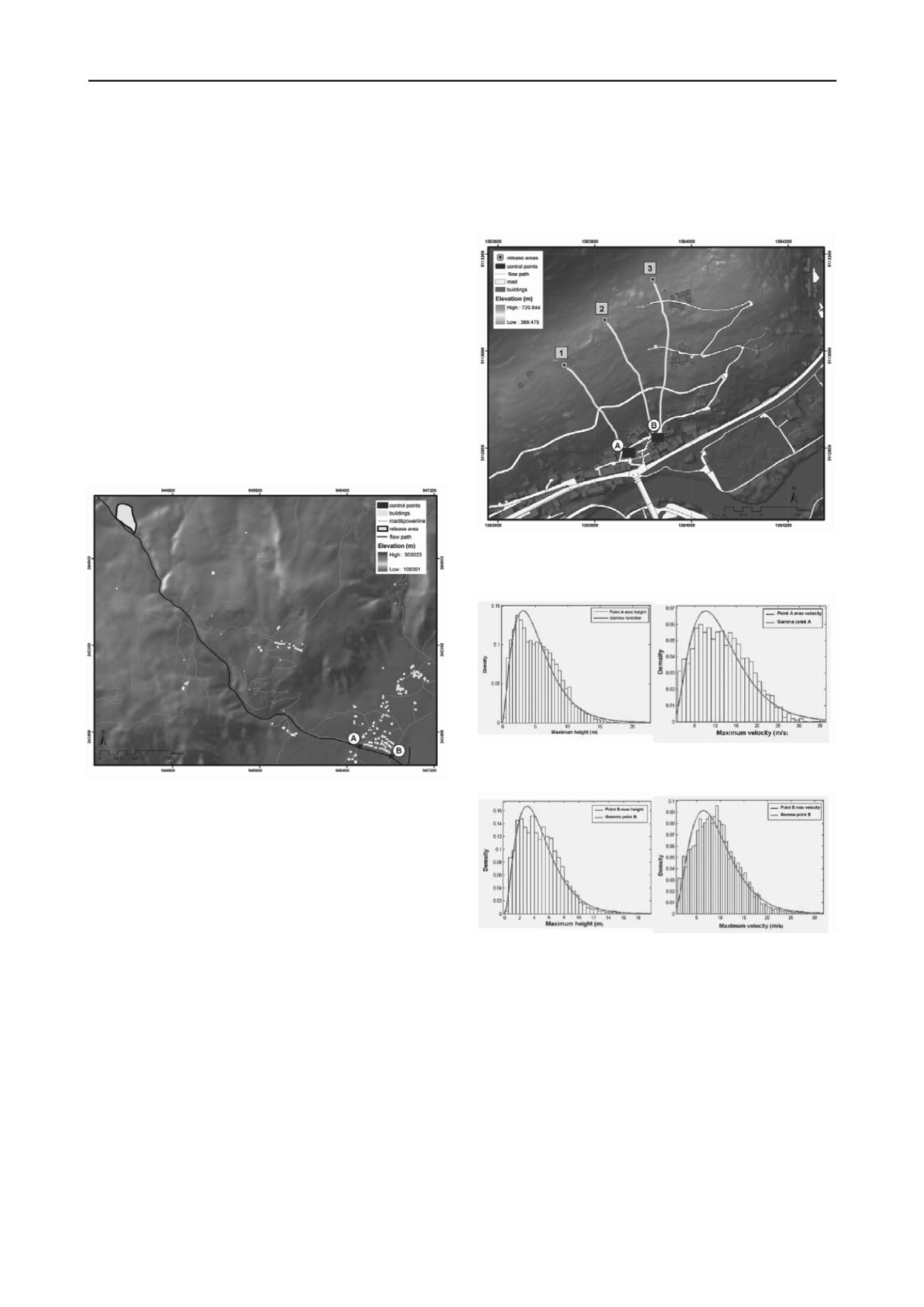
2159
Technical Committee 208 /
Comité technique 208
3.2 Tresenda village in the Valtellina Valley
Valtellina is an important Italian alpine valley located in Central
Italian Alps (Northern Italy, Sondrio Province). The valley
starts near Bormio (1,225 m a.s.l.) and it runs for about 100 km
to Colico (218 m a.s.l.) near Como Lake. The axis of the valley
is formed by the Adda River, originating from small lakes in the
Rhaetian Alps at 2,335 m a.s.l. The Adda River flows through
the entire valley in a flat alluvial plain up to 3 km wide and it
joins the Po River in the Lombardy Plain. Valtellina has a U-
shaped valley profile derived from Quaternary glacial activity.
The lower part of the valley flanks are covered with glacial,
fluvio-glacial, and colluvial deposits of variable thickness
(Crosta et al. 2003) The Tresenda village is located in the
Valtellina area and is located in the municipality of Teglio in
the Valtellina Valley. Spatial information of past damage
derived from historical records, local chronicles, and interviews
with local people confirmed that the village of Tresenda was
affected by debris flows events which caused significant losses
in 1983, 2000 and 2002.
Soil slips, resulting in debris flows
were triggered on the steep slopes above Tresenda, where the
soil thickness varies from 0.7 to 2.5 m.
Figure 3. Digital elevation model of
the Faucon catchment with the
location of the two points used for reporting the results (A and B).
The documented past events crossed minor roads and impacted
buildings in the Tresenda village, while running along main
drainage lines (Cancelli & Nova 1985, Guzzetti et al. 1992).
Major events in future may produce casualties and serious
property damages as well as the obstruction of a main road. In
the Tresenda case study two location points were also located
within the area having the highest concentration of exposed
elements.
4 RESULTS
4.1 Application of the methodology to the Faucon catchemnt
The release volume chosen in the Faucon study was 50,000 m
3
and was set as constant in the simulations. Past events in the
Faucon area have had final volumes between 55,000 m
3
–
80,000 m
3
. The unit weight of the debris flow was set to a
constant value of 19 kN/m
3
. The time step was set at 1 s and the
total duration of each simulation was 500 s. The Monte Carlo
method applied in the Faucon catchment was modelled with the
Bingham model. This model was selected because of the geo-
environmental setting of the area where past events are
described to have viscoplastic behaviour (Remaître et al. 2005).
In total, 5,000 runs were completed corresponding to the input
parameters obtained from randomly sampling the fitted
Gaussian copula. For each of the 5,000 runs, the maximum flow
heights and maximum velocities were reported for each of the
two points. The results of each point were used to populate a
probability density function of each intensity parameter. A
Gamma distribution was the distribution that best fitted the
maximum flow height and velocities measured in points A and
B (Fig. 5 & 6).
Figure 4. Digital elevation model of
the Tresenda village with the
location of the two points used for reporting the results (A and B) and
three different release areas (1, 2 and 3).
Figure 5. Gamma distribution fitted to the maximum height
(left) and velocities (right) values obtained in point A.
Figure 6. Gamma distribution fitted to the maximum height
(left) and velocities (right) values obtained in point B
The obtained results of the mean values of height and
velocity computed with the Monte Carlo method were
compared with the events that took place in 1996 and 2003
(Remaître et al. 2008, Remaître et al. 2009). In both cases, the
mean value of the distribution overestimates the flow height and
the flow velocities. In the results, point A which is located
higher up in the catchment than point B (apex of the fan) reports
higher values for both intensity parameters (height and
velocity).
4.2 Application of the methodology to the Tresenda village
In the Tresenda case, the main purpose of the study was to
observe
the response of the model when using more than one
release area. In the Tresenda case, three simultaneous release


